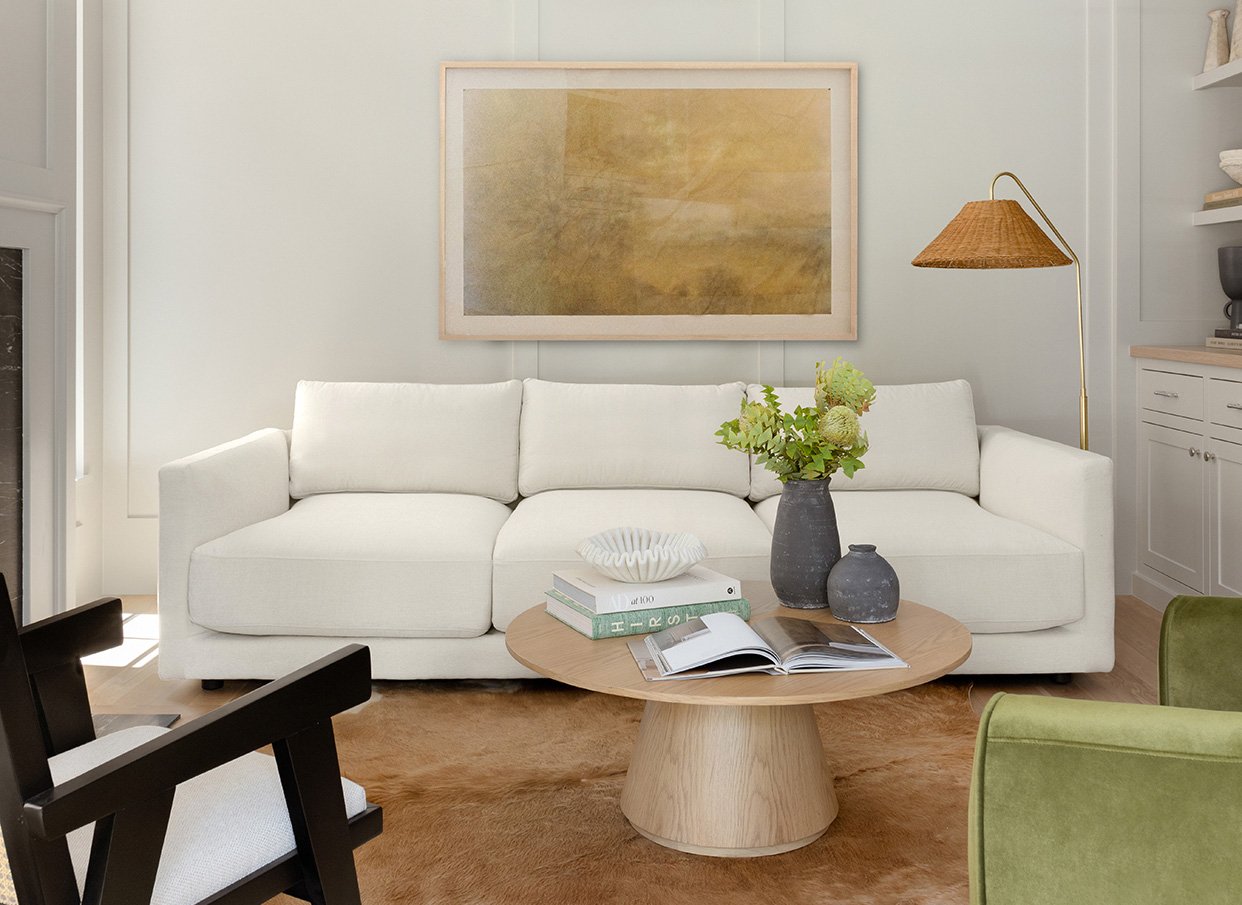When it comes to styling your living room, it can be helpful to think from the top down. Your rug choice likely isn’t going to be the first design decision you make when putting together an interior — but it can be the most impactful one. Of course, we know that figuring out the right living room rug placement for your home’s layout and specific furniture arrangement can be far easier said than done. Luckily, there are some best practices you can follow!
Living Room Rug Placement Do’s
First, it’s important to understand the power of a good living room rug — this piece serves as an anchor for your space and can shift the entire tone of your interior. So, it’s an opportunity to bring in some personality; don’t be afraid to take a risk with color and pattern. The texture of your living room rug can also have a huge impact on its surroundings, so think about how you want your space to feel; if cozy if your vibe, a shag rug may be right for you, and if you want a pared-back, natural look, jute could be the best choice. Ultimately, your living room rug should complement and harmonize with the rest of your space.
Living Room Rug Placement Don’ts
Now, there are several rules of thumb to make sure that your living room rug plays the right role in your home. Most importantly, you’ll want to make sure that it aesthetically aligns with the rest of the room; don’t miss opportunities to bring in a new pop of color, texture, or pattern. And don’t forget to follow sizing best pratices! Generally, you’ll want a rug to be big enough so that the front legs of your sofa(s) and armchair(s) stand on top of it — a rug that’s too small or too big can seriously distort how your space looks in terms of proportions. When in doubt, map out the size of a rug with newspaper to see how it might look in your home. Whatever you choose, don’t skip the rug altogether. Trust us when we say that it can make the biggest difference!
Now, here are a few living room rug placement ideas to consider that go beyond the expected one-and-done.
Living Room Rug Placement: Easy and Effortless
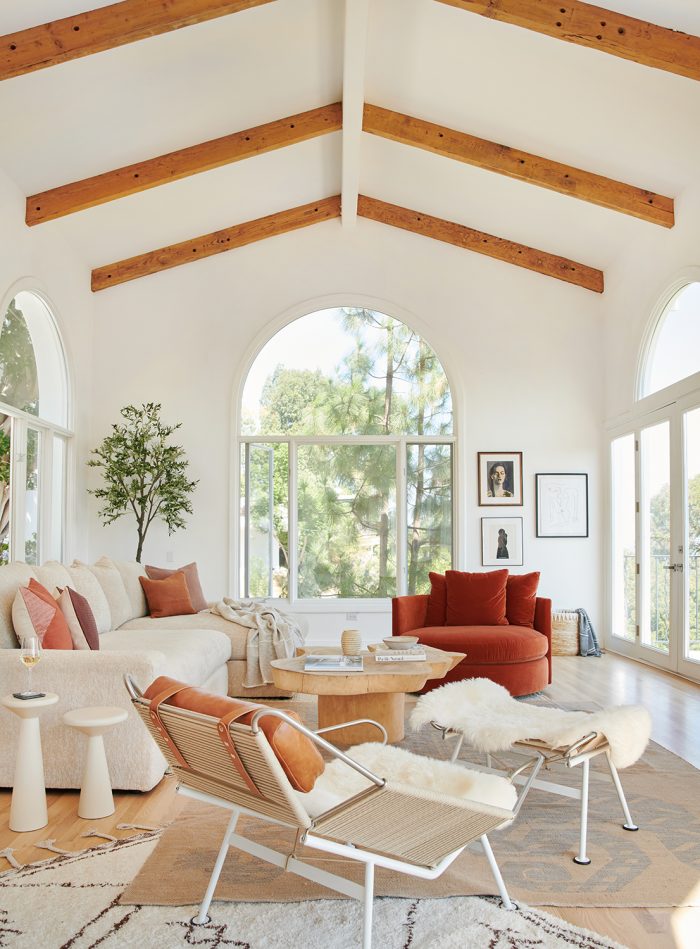
One flatweave and one low-pile rug — both in simple, bohemian patterns — lend this living room an air of insouciance that’s amplified by their almost haphazard layering. Their connecting corners give this warm-toned room a more relaxed appeal. Thanks to their neutral colors and relatively simple designs, they don’t distract from the rest as the space, but rather serve as an unexpected yet impactful detail.
Living Room Rug Placement: Element of Surprise
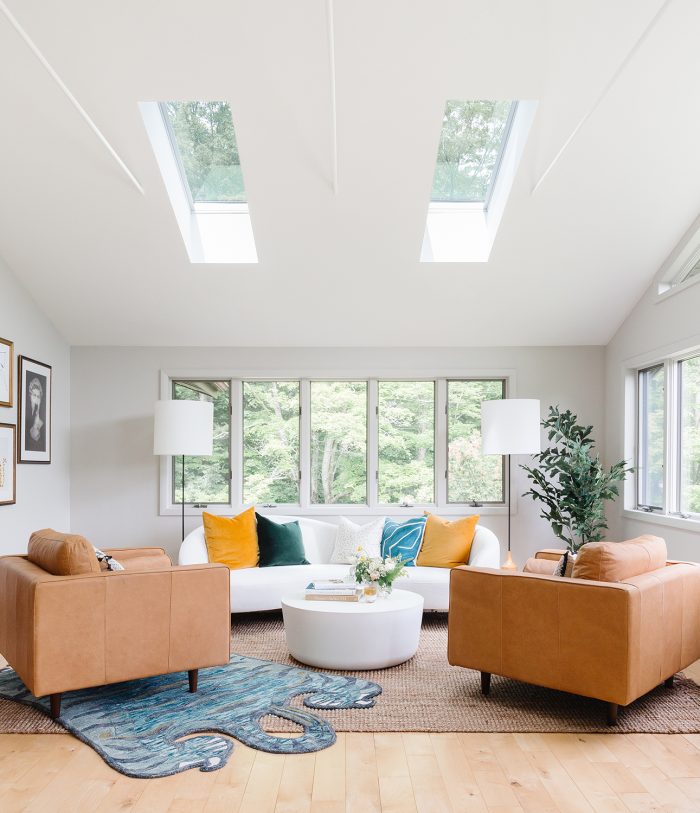
This living room could easily “work” with the large jute area rug alone; it sets a solid foundation for the colorful seating arrangement in the space. But, a playful teal tiger rug — set diagonally across one of the base rug’s corners — is so surprising and punchy that it completely shifts the tone of this room. Two throw pillows in matching blue and green help make it feel at home in the space.
Living Room Rug Placement: Simple and Understated
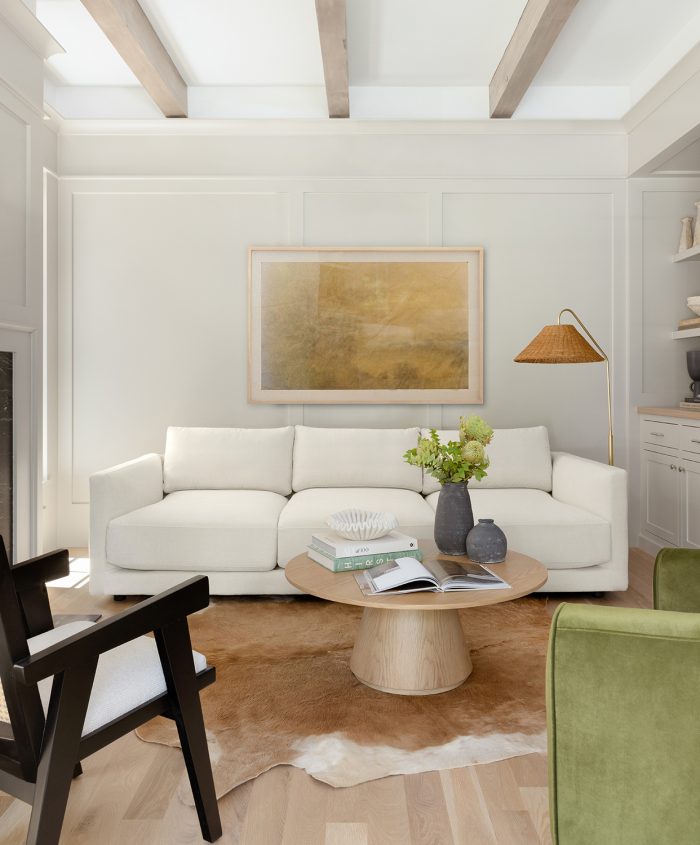
In this understated yet detail-driven living room, a tan-colored cowhide nearly blends into the warm-toned hardwood floor beneath it — but its texture and natural coloring have a transformational effect on its surroundings. The rug, functioning as a central point of a seating arrangement, lends a relaxed feeling to a more streamlined sofa, and ties in beautifully to the watercolor portrait that hangs above it.
Living Room Rug Placement: Cozy and Eye-catching
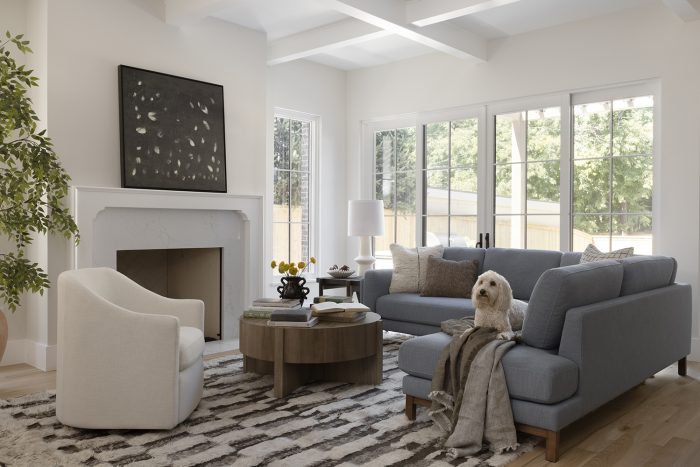
Sometimes, simple and classic is the way to go. In the above living space, a graphic, texture-rich rug sits underneath the accent chair, sofa, and coffee table to create a cozy, enveloping atmosphere. Due to the high-contrast palette, one rug is enough — the resulting look is effortless, warm, and perfect for a lounge-worthy living room.
Living Room Rug Placement: Subtle distinctions
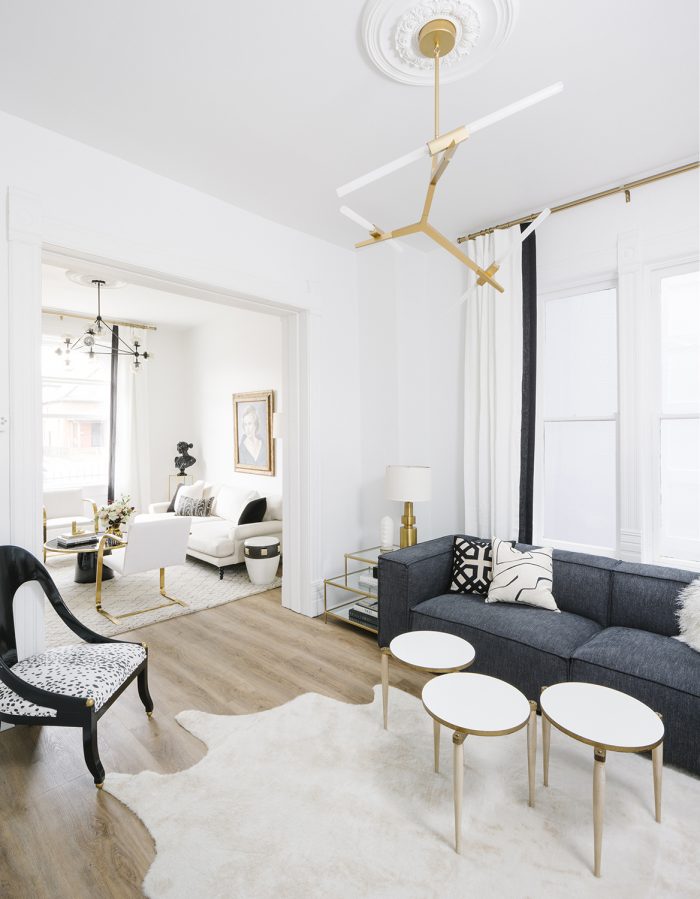
A minimal, mostly white color palette makes this conjoined family room and living room look bright and airy — and a few key styling choices keep them feeling overly simple or worse, antiseptic. Consider the impact that two different cream-colored rugs have in differentiating each space: A high pile rug in the sitting room has a totally different feel than a large white cowhide in the living room, but both they work well together in their separate areas of influence.
Living Room Rug Placement: Perfect layers
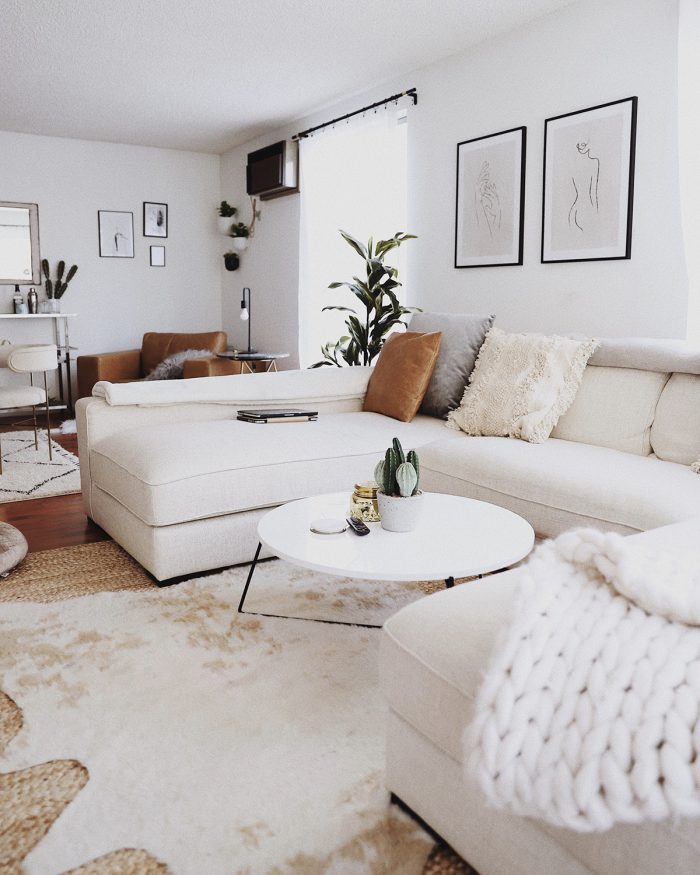
It doesn’t get much easier than this. Layering two rugs — critically, in different shapes, colors, and textures — on top of one another is a great way to make your living room look cozy yet intentional. Why this combo works: A jute rug works as an excellent “base” because of its natural warm tan hue, while a cowhide rug brings in an element of surprise with its abstract coloration and its organic silhouette. Because both have their roots in the natural world, they make an ideal match that doesn’t overpower this space.
Want expert advice on your own space, straight from an interior designer? Get started today with our style quiz.

